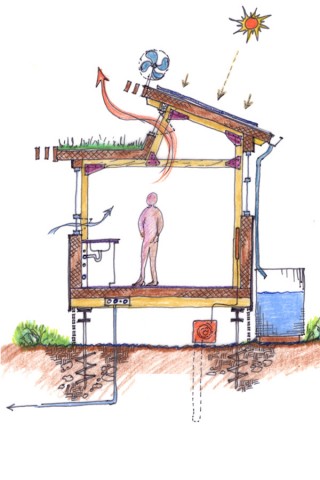During our design process, we assess the environmental challenges posed by each project, and consider the appropriate sustainable design strategies within the following categories:
Land Degradation: As societies develop around the world, our communities convert diverse ecosystems and productive farmlands into grids of streets and buildings. Urban and Brownfield infill, building re-use, compact building footprints, erosion prevention, and landscape restoration minimize the impact of buildings on their open space surroundings.
Resources: Construction and development necessitate the ongoing extraction of already-dwindling resources, including raw materials, water, and energy fuels. Reused, recycled, durable, sustainably-harvested, and rapidly-renewable materials reduce the need for virgin materials and building components; deconstructability allows for continued reuse of components. Water-efficient fixtures, gray water re-use, and rainwater harvesting mitigate the looming local, regional, and global water shortage crises.
Energy and Emissions: Greenhouse gases and other combustion-related emissions from constructing and conditioning buildings exacerbate global warming and associated environmental destruction. Highly insulated building envelopes; daylighting; passive and highly efficient heating, cooling, and ventilation reduce building energy use. Combustion-free renewable energy generated via photovoltaics, solar thermal, wind, and geothermal minimize our carbon consumption; financial incentive programs and rising energy costs are driving the implementation of these technologies.
Toxicity: Substances we developed over a century of frenzied chemical innovation, but now know to be hazardous infiltrate and accumulate over centuries in the soil, water, air, and in our cells – the building blocks of life on earth. Replacing synthetic volatile and non-degradable building materials with benign, natural, and biodegradable alternatives is essential to creating non-toxic building environments.

